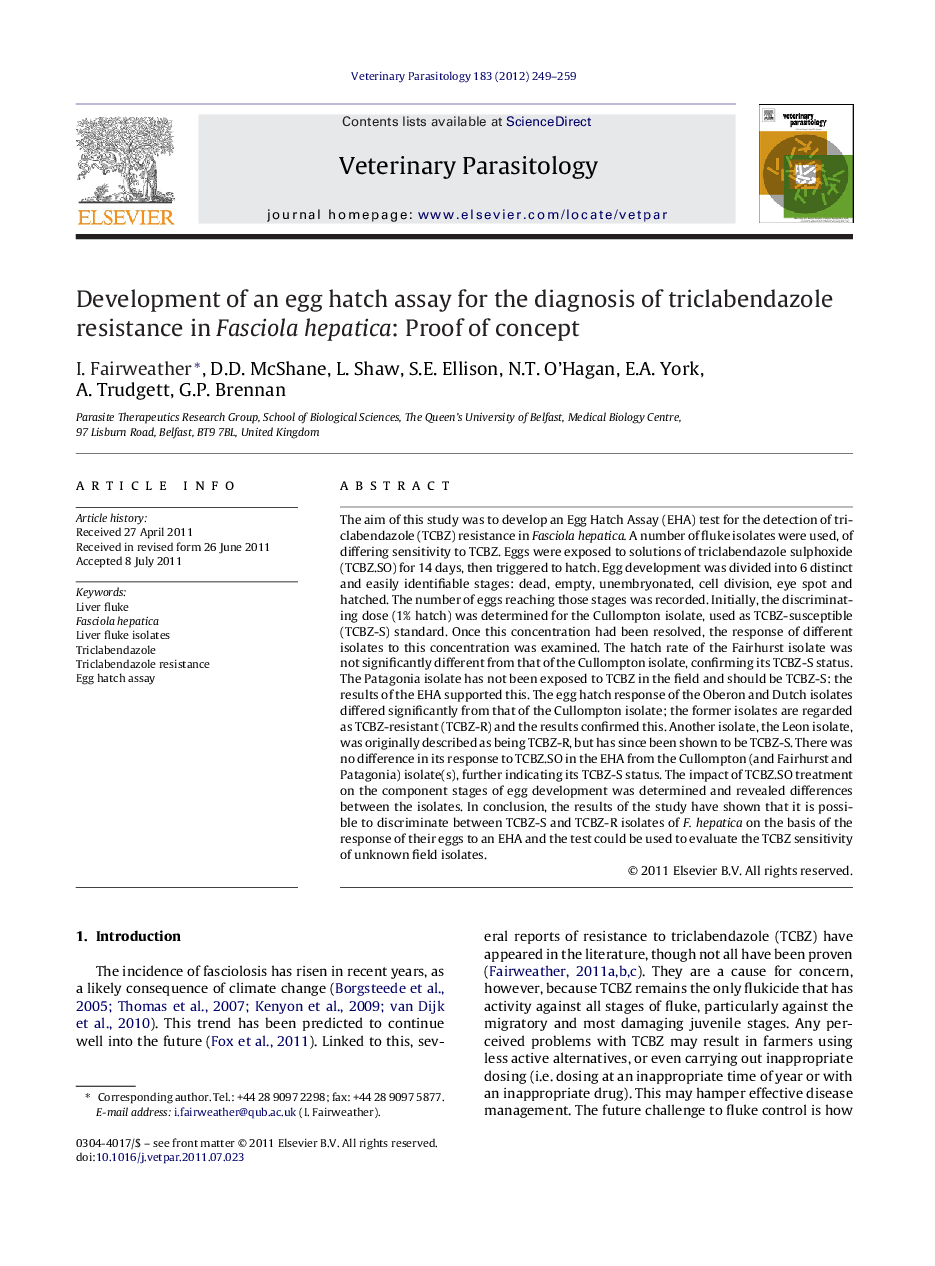| Article ID | Journal | Published Year | Pages | File Type |
|---|---|---|---|---|
| 5805546 | Veterinary Parasitology | 2012 | 11 Pages |
The aim of this study was to develop an Egg Hatch Assay (EHA) test for the detection of triclabendazole (TCBZ) resistance in Fasciola hepatica. A number of fluke isolates were used, of differing sensitivity to TCBZ. Eggs were exposed to solutions of triclabendazole sulphoxide (TCBZ.SO) for 14 days, then triggered to hatch. Egg development was divided into 6 distinct and easily identifiable stages: dead, empty, unembryonated, cell division, eye spot and hatched. The number of eggs reaching those stages was recorded. Initially, the discriminating dose (1% hatch) was determined for the Cullompton isolate, used as TCBZ-susceptible (TCBZ-S) standard. Once this concentration had been resolved, the response of different isolates to this concentration was examined. The hatch rate of the Fairhurst isolate was not significantly different from that of the Cullompton isolate, confirming its TCBZ-S status. The Patagonia isolate has not been exposed to TCBZ in the field and should be TCBZ-S: the results of the EHA supported this. The egg hatch response of the Oberon and Dutch isolates differed significantly from that of the Cullompton isolate; the former isolates are regarded as TCBZ-resistant (TCBZ-R) and the results confirmed this. Another isolate, the Leon isolate, was originally described as being TCBZ-R, but has since been shown to be TCBZ-S. There was no difference in its response to TCBZ.SO in the EHA from the Cullompton (and Fairhurst and Patagonia) isolate(s), further indicating its TCBZ-S status. The impact of TCBZ.SO treatment on the component stages of egg development was determined and revealed differences between the isolates. In conclusion, the results of the study have shown that it is possible to discriminate between TCBZ-S and TCBZ-R isolates of F. hepatica on the basis of the response of their eggs to an EHA and the test could be used to evaluate the TCBZ sensitivity of unknown field isolates.
